Required Reading - 2
The Role and Power of Design in Social Sustainability
Valerie Fletcher
(Originally published in Abacus, A Bi-Annual Journal of Architecture, Conservation and Urban Studies, India, Monsoon 2007.)
A global dialogue has begun with profound implications for architecture and design. The UN’s World Health Organization (WHO) posed a challenge to designers with its redefinition of disability as a contextual experience in 2001. Though WHO policy would not ordinarily be relevant to designers, this is different. WHO defined disability not as a phenomenon of a fixed segment of the population but rather as a universal human experience. It is not about some vague ‘them’ but rather about all of us. Most significantly for designers, it reframed disability as a by-product of the interaction between the individual and the environment. When we design the environment to anticipate a spectrum of potential limitations, we have the power not only to minimize disability but, potentially, to enhance everyone’s well-being and performance. The UN’s 191 member states adopted the new definition, called the International Classification of Functioning, Disability and Health (ICF) after ten years of development, making this a framework for research and collaboration globally.
The timing is just in time to respond to new population realities. The aging of the world’s population is the tsunami of 21st century demographics. Each month the number of people 60 and over increases by 1.2M. By 2050, for the first time in history, the old will outnumber children. The most dramatic changes are in the developing world. It is projected that there will be 400M Chinese 60+ by 2050, the same year that the entire Japanese population is expected to be no more than 69M.
In contrast to the rallying cry of environmental sustainability, driven by the need to address the failure in the 20th century to exercise responsible stewardship of the planet, design for social sustainability responds to a successful accomplishment of the 20th century. Longer lives are one measure. The other is survival of maladies that would have cut short our lives a generation ago. Now it is commonplace to survive congenital abnormalities, catastrophic illness or serious injury. Science has delivered not only the promise that many of us will live decades longer than a century ago but also the reality that many of us are survivors, grateful to live but living with some limitations.
The only rational response to the changed human landscape must be sense of urgency that nothing but a wholesale rethinking of our responsibility and power as designers. There is no time to waste replicating old solutions. We must invent solutions for a range of human ability in every project from urban infrastructure to workplaces, homes, schools, cultural and entertainment venues. The ICF calls for designers to go beyond barrier removal and identify the facilitators of well-being and performance. That charge is incorporated into the 2007 UN Treaty on the Human Rights of People with Disabilities. As of today, 90 nations, including India, have signed the Treaty. It is a time for designers to lead a new vision of the potential of design to transform the human condition.
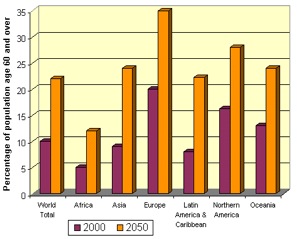 |
Source: World Population Prospects, The 1998 Revision, Volume II: Sex and Age. The Population Division, Department of Economic and Social Affairs, United Nations Secretariat.
|
Valerie Fletcher has been the Executive Director of the Institute for Human Centered Design since the beginning of 1998. Valerie currently oversees a wide range of projects including a global web-based collection of case studies of universal design in the built environment, demonstration projects for a public school and a community development initiative that pair universal design and environmental sustainability with research focused on features for people with sensory or brain-based functional issues. Fletcher lectures and writes internationally. She is the Principal Investigator for the New England ADA Center, a project of IHCD. Fletcher’s career has been divided between design and public mental health. She is the former Deputy Commissioner of the Massachusetts Department of Mental Health where she directed the reinvestment of $70M in institutional spending to new community programs through a landmark community planning process. She has a masters in ethics in public policy from Harvard University. The Boston Society of Architects awarded Fletcher their Woman in Design award in 2005. She lives in Boston with her husband, Mark, a sculptor and furniture designer.
|
|
|
 Like everyone else, this worker in Mexico needs transportation to his job. Public transport needs to be accessible for persons with mobility, sensory, and cognitive disabilities.  Persons with disabilities around the world are promoting transport systems that provide mobility for everyone. Mexican disability advocates are shown meeting with local transit officials to promote accessible transport. AEI has published guides to assist planners and advocates of inclusive transportation.  An accessible travel chain begins with safe streets and sidewalks. This street in Foshan, China, has separate rights-of-way for pedestrians, human-powered vehicles, and motor-powered vehicles.  Disability advisors at Rio de Janeiro’s Independent Living Center monitored access features for this street crossing, part of the Rio City Project.  Tactile guideways and tactile warning strips assist blind and sight-impaired pedestrians as well as others in Foshan, China. 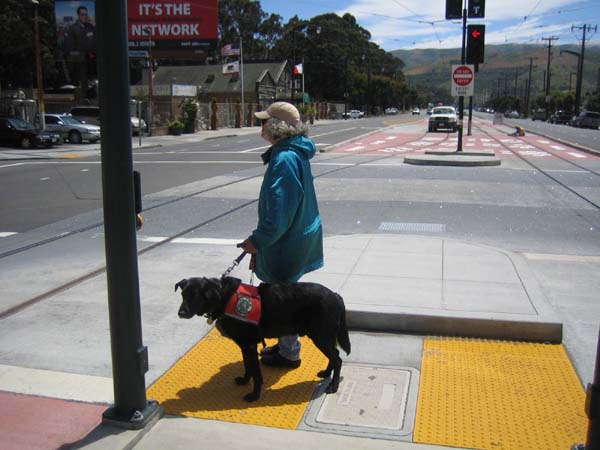 Tactile warnings alert this blind person crossing a mid-street island in San Francisco, USA. 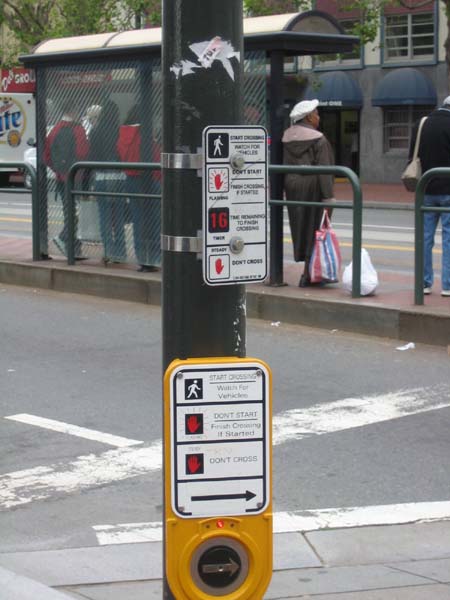 Busy intersections benefit from pedestrian controlled buttons and assist blind persons to cross through sound and vibration signals 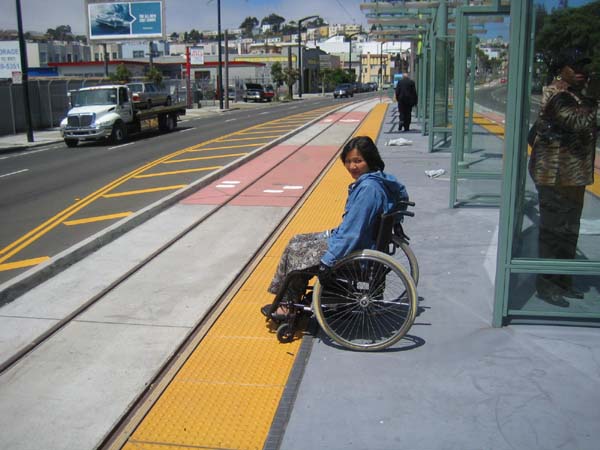 Tactile warnings protect blind persons – and all other passengers – from getting too close to the platform edge in transit stations. 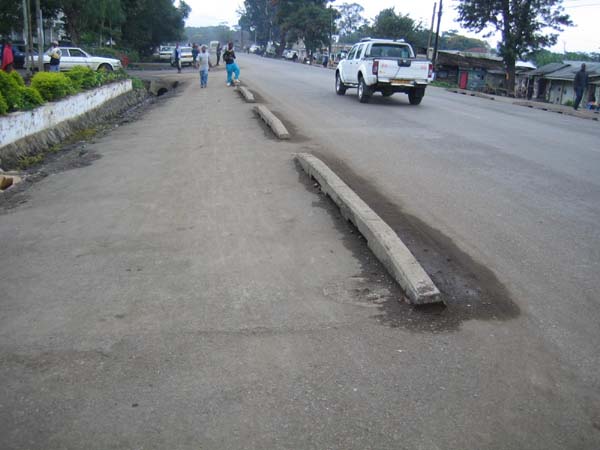 This footway adjacent to a road in Tanzania is protected by curb pieces which separate motor traffic from pedestrians and bicycles. Such basic safety measures are needed to prevent pedestrian injuries along roadways in many countries. 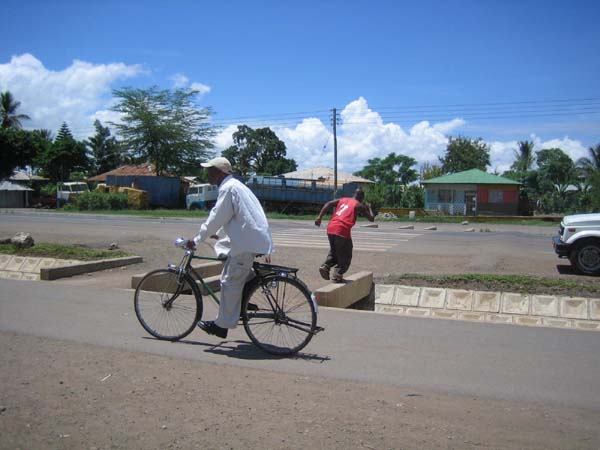 Even better, pedestrian and non-motorized traffic can be kept safely removed from motorized traffic by accessible sidewalks separated from the roadway, in this case by a well-designed drainage system along a main road in Tanzania. Speed bumps are used to slow traffic at crosswalks.  This pedestrian crosswalk provides level access to a bus island at an inter-modal transfer center in Mexico City.
Photo by T. Rickert, courtesy of DFID (UK) and TRL (UK). 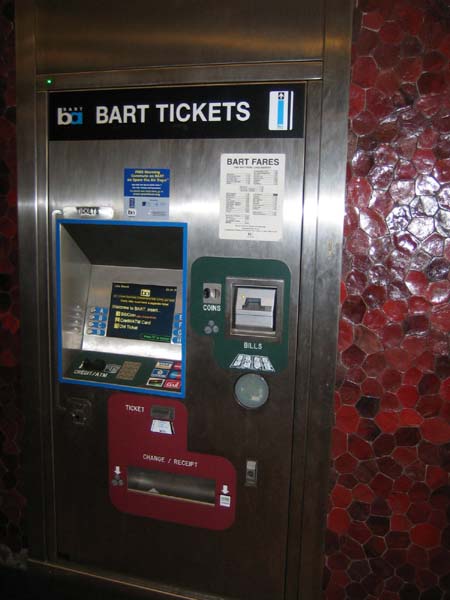 Ticket vending machines should be low enough for use by wheelchair users and all short persons, as illustrated by the good design of this machine at a BART station in the San Francisco Bay area, USA.  Stairs are often retrofitted with stair lifts in transit terminals, as here in a Tokyo subway station. However, in new construction, elevators should be considered where possible.  A wheelchair user takes the elevator from the platform level of the Shenzhen, China, railroad station.  Wide doors are needed to accommodate wheelchair riders entering fare-paid areas of transit terminals, as in this subway station in Rio de Janeiro. 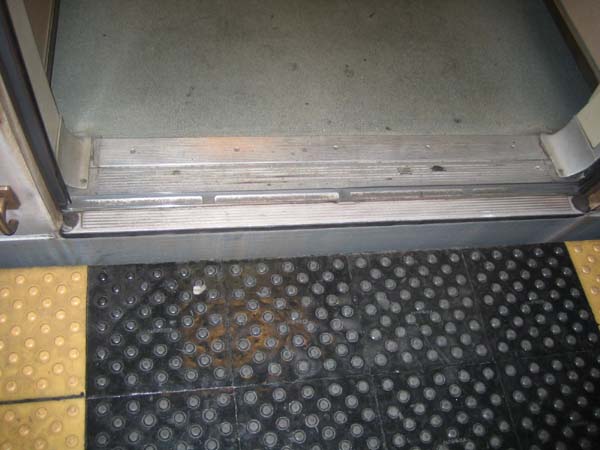 Everyone can safely board this BART train, due to a minimal horizontal and vertical gap. 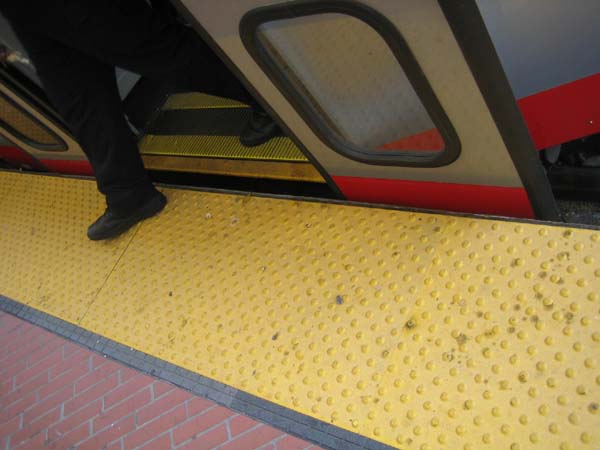 However, care must be taken that horizontal gaps are not too wide. The orange “gap filler” pops up when the doors open in San Francisco’s Muni Metro, assuring a safe gap.  Small portable ramps can provide inexpensive access in many rail stations, as shown here in Tokyo. 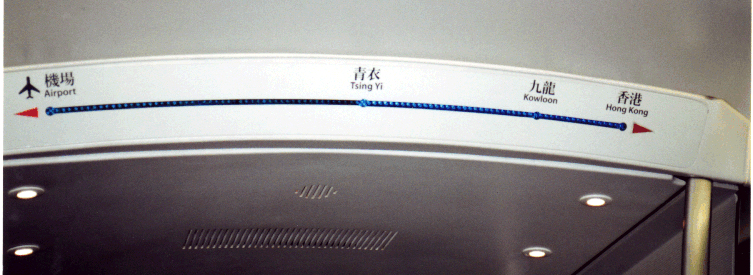 All passengers, and especially deaf and hard-of-hearing passengers, benefit from well-located visual information, as with this route display on board a train to the Hong Kong airport. 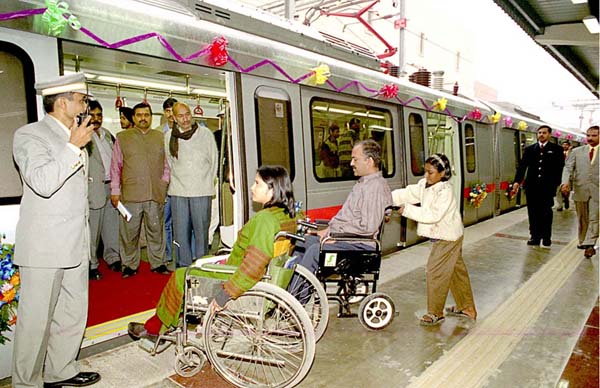 Advocates Anjlee Agarwal (left) and Sanjeev Sachdeva board the accessible Delhi Metro on its inaugural run.
Photo courtesy of Sanjay Sakaria and Samarthya, from Amar Ujjala Indian Daily  Express buses in Curitiba, Brazil, exemplify universal design. All passengers, including those with disabilities, quickly board with level entry. Similar Bus Rapid Transit (BRT) systems operate in Quito, Ecuador; Bogota, Colombia, and a growing number of cities around the world.
Photo by Charles Wright, Inter-American Development Bank. 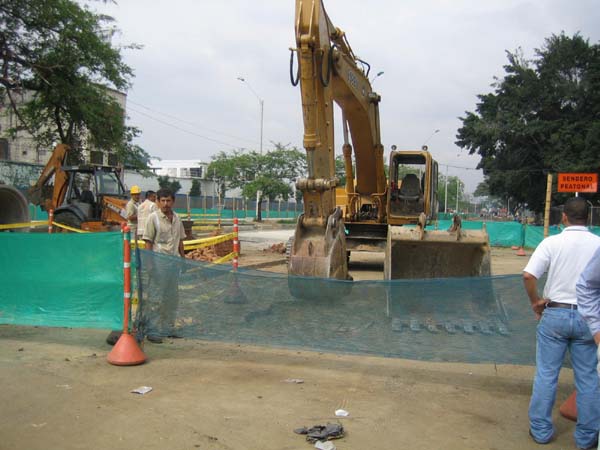 Construction of this Bus Rapid Transit (BRT) trunk line corridor in Pereira, Colombia, symbolizes the rapid spread of BRT systems around the world. BRT systems lend themselves to universal design, but details must be monitored carefully to maximize accessibility. 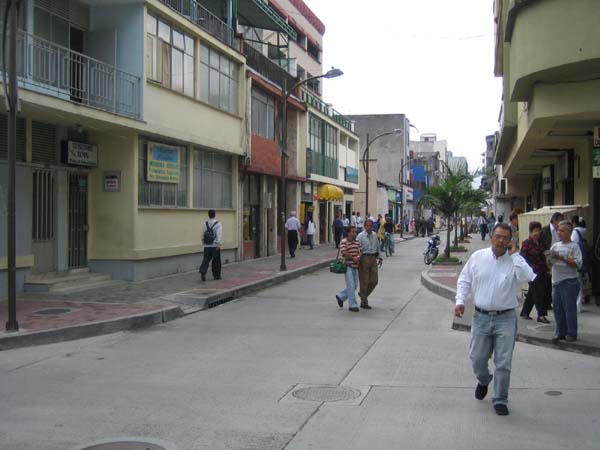 Although most BRT busways are on broad thoroughfares, this exclusive single-direction bus lane nearing completion in Pereira illustrates that BRT systems can sometimes be built on narrow streets.
This and above photo by T. Rickert courtesy of World Bank 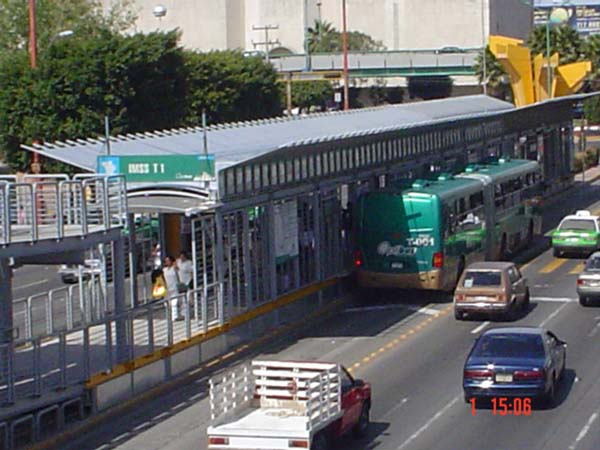 The photo shows an articulated bus docking at a Bus Rapid Transit station in León, Mexico. 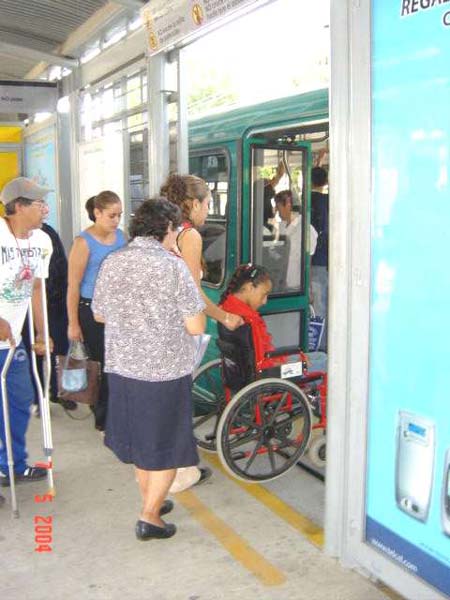 Pre-paid passengers inside a station board a high-capacity BRT bus in León.
This and above photo courtesy of Sistema Integrado de Transporte Masivo de León 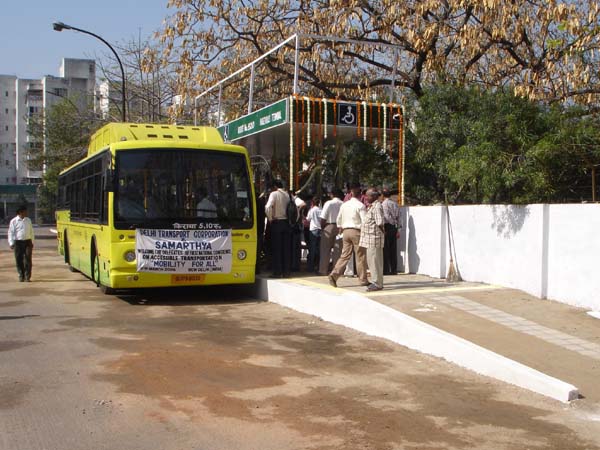 A prototype low-floor bus is tested in New Delhi adjacent to a platform the same height as the bus floor. 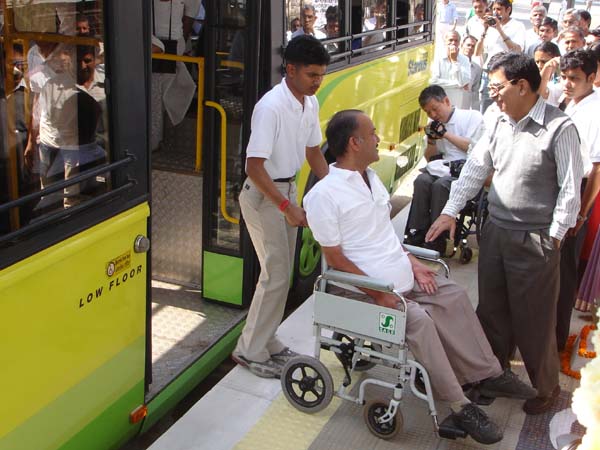 A closeup of the same bus stop illustrates the advantages of fast boarding for all passengers from platforms that eliminate the need for climbing steps to board.
This and above photo courtesy of Gerhard Menckhoff of the World Bank. 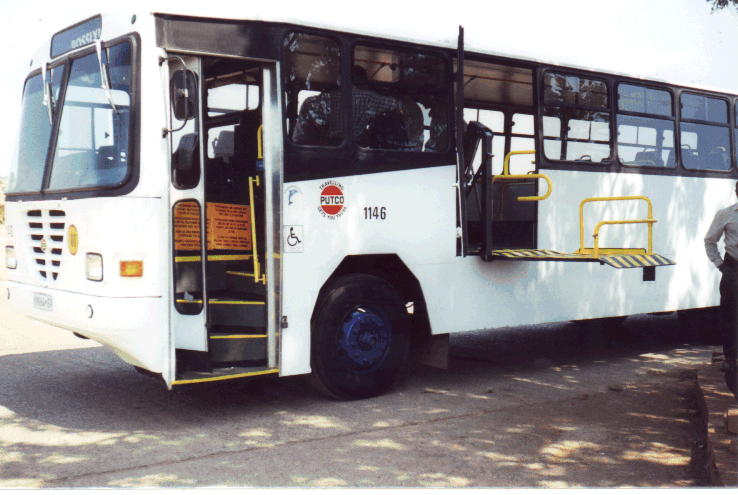 This prototype lift-equipped bus serves Mamelodi Township in South Africa. Note the excellent use of contrasting colors.
Photo by T. Rickert, courtesy of DFID (UK) and TRL (UK).  Mexico City officials inaugurated service in 2001 with 50 new buses equipped with lifts and other access features.
Photo courtesy of Marìa Eugenia Antunez.  In addition to a wheelchair lift, this bus in Mexico City has a retractable step beneath the front entrance.  This low-floor bus in Warsaw, Poland, uses an inexpensive hinged ramp which provides easy boarding for passengers with disabilities.  A low-floor bus in Hong Kong also exhibits excellent color contrast, using a bright yellow on key edges and surfaces. 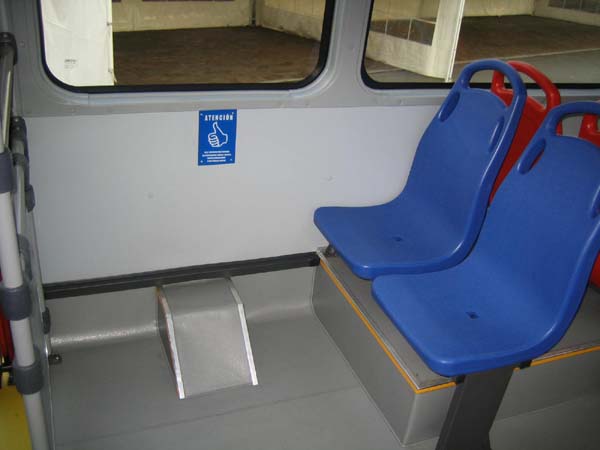 Transit systems around the world have reserved seating for seniors and passengers with disabilities, and often for pregnant women as well, as found on this TransMilenio bus in Bogotá, Colombia. 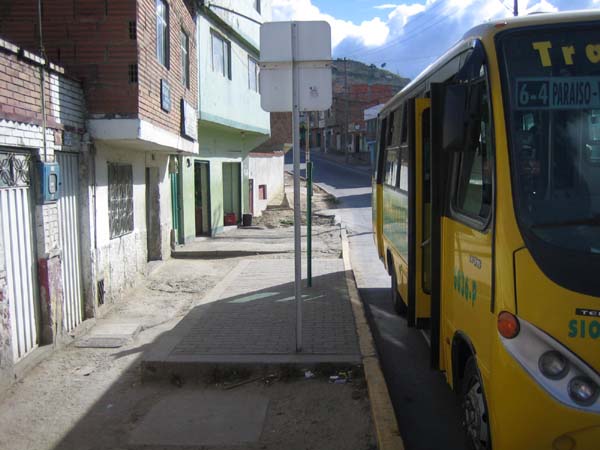 Even when bus stops are not accessible to wheelchair users, access for seniors and others with disabilities can be enhanced by a level all-weather pad even in the absence of paved sidewalks. The photo is from a TransMilenio feeder route in Bogotá.
This and above photo by T. Rickert courtesy of World Bank.  Thousands of Mexico City’s small inaccessible microbuses are being recycled and replaced with larger vehicles, often with better access features.  One such feature is this priority seating located behind the driver where there is extra leg room and it is easier for blind passengers to hear the driver call out key stops.
Photo by T. Rickert, courtesy of DFID (UK) and TRL (UK).  In other new buses in Mexico City, a wide rear door has low steps and is easily accessed by semi-ambulatory passengers from a raised sidewalk, but requires that drivers carefully pull in to the curb.
Photo by T. Rickert, courtesy of DFID (UK) and TRL (UK). 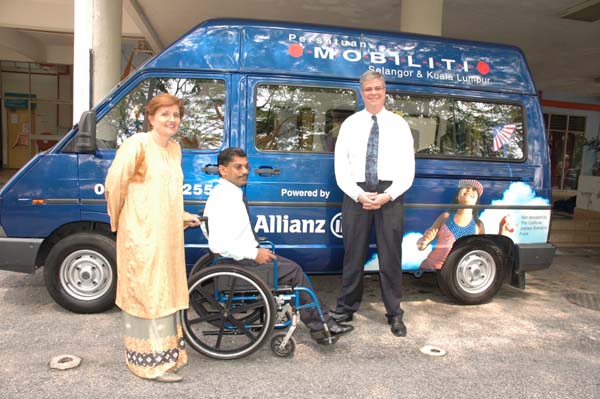 Community initiatives are playing a growing role in providing accessible door-to-door transport in many countries. This accessible van in Kuala Lumpur, Malaysia, belongs to the six-vehicle fleet of Persatuan Mobiliti.
Photo courtesy of Persatuan Mobiliti  Artist’s conception of a three-wheeled door-to-door vehicle connecting with an accessible ramped platform with bridge at a bus stop at a key site.  This prototype three-wheeled vehicle was built with AEI’s assistance by Kepha Motorbikes in Nairobi, Kenya.  Detail showing entry via a ramp at the rear of the test vehicle.
This and above photo courtesy of Wycliffe Kepha.  This accessible bicycle rickshaw in India has a rear door which serves as a ramp.
Photo courtesy of Bikash Bharati Welfare Society and Lalita Sen. 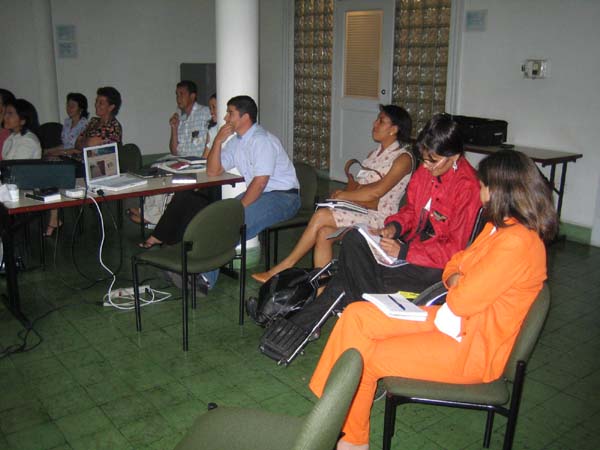 A public meeting in Cali, Colombia, discusses accessibility to Bus Rapid Transit systems. Readers can go to the Bus Rapid Transit Accessibility Guidelines in our Resources section, under the links to the World Bank.
Photo by T. Rickert, courtesy of the World Bank. 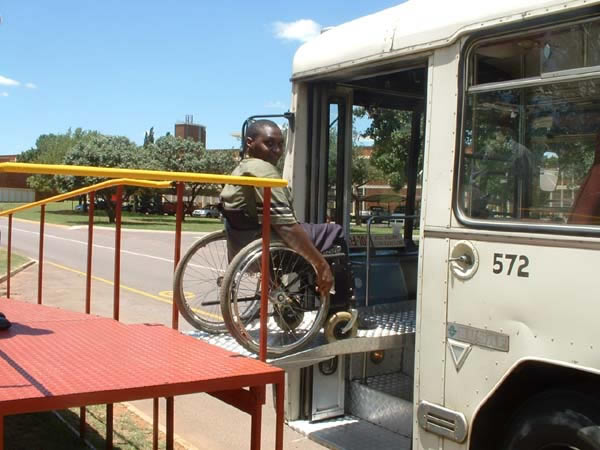 In this version, the bridge piece is mounted under the platform and put into place by the bus driver.
This and above photo courtesy of DFID (UK) and CSIR Transportek (South Africa). 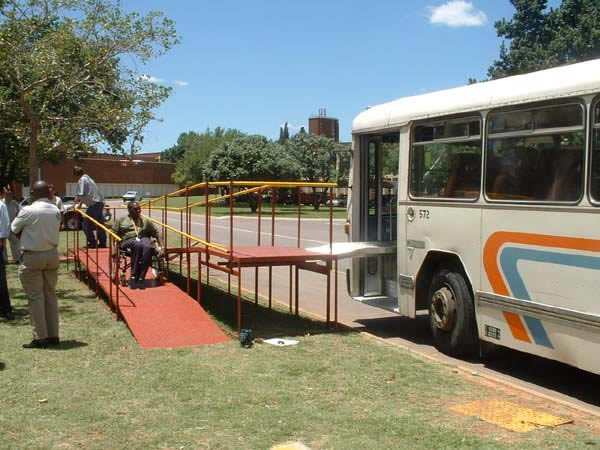 This test in South Africa of a prototype platform for use at key sites shows an alternative approach to access for wheelchair users.
|
|














































